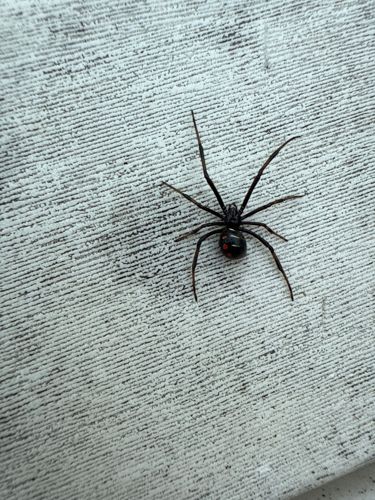Southern Black Widow Spider
Scientific Name: Latrodectus mactans
Order & Family: Araneae, Theridiidae
Size: Female body length typically 12-16 mm (0.5-0.6 inches); males are much smaller, around 3-6 mm (0.12-0.24 inches).

Natural Habitat
Often found in dark, secluded areas such as woodpiles, sheds, garages, undisturbed corners of basements, crawl spaces, and under outdoor objects like rocks and logs. They prefer dry and undisturbed locations.
Diet & Feeding
Primarily preys on insects such as flies, mosquitoes, grasshoppers, beetles, and caterpillars. They may also eat other spiders. They capture prey using their strong, irregular webs, then inject venom to immobilize and digest their victims.
Behavior Patterns
Nocturnal and solitary. Females are known for their potent venom and characteristic hourglass marking on the underside of their abdomen. They are generally not aggressive but will bite if provoked or if their egg sac is threatened. Males are rarely seen and are not considered dangerous. Females construct irregular, tangled webs, often near the ground.
Risks & Benefits
Risks: The bite of a female Southern Black Widow spider is venomous and can be dangerous to humans, especially children, the elderly, or those with compromised immune systems. Symptoms of a bite (latrodectism) can include severe muscle pain, cramps, abdominal pain, nausea, sweating, and tremors. While rarely fatal, medical attention is often required. Benefits: As predators, they help control populations of various insect pests.
Identified on: 9/8/2025